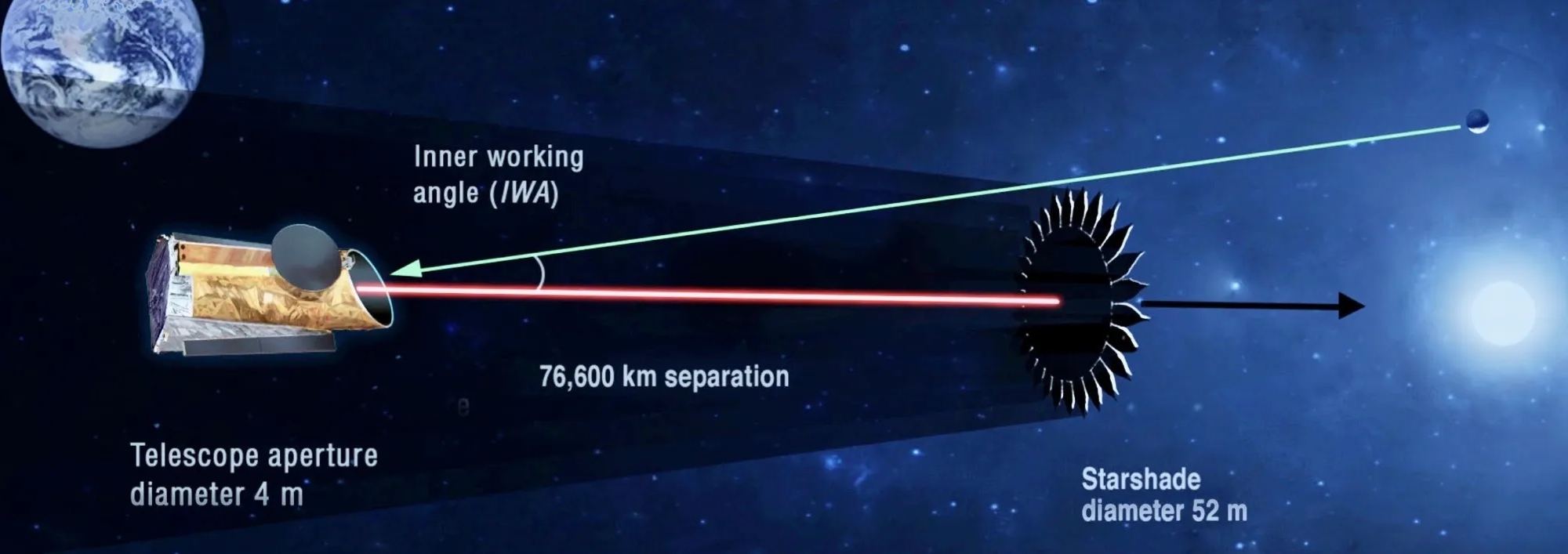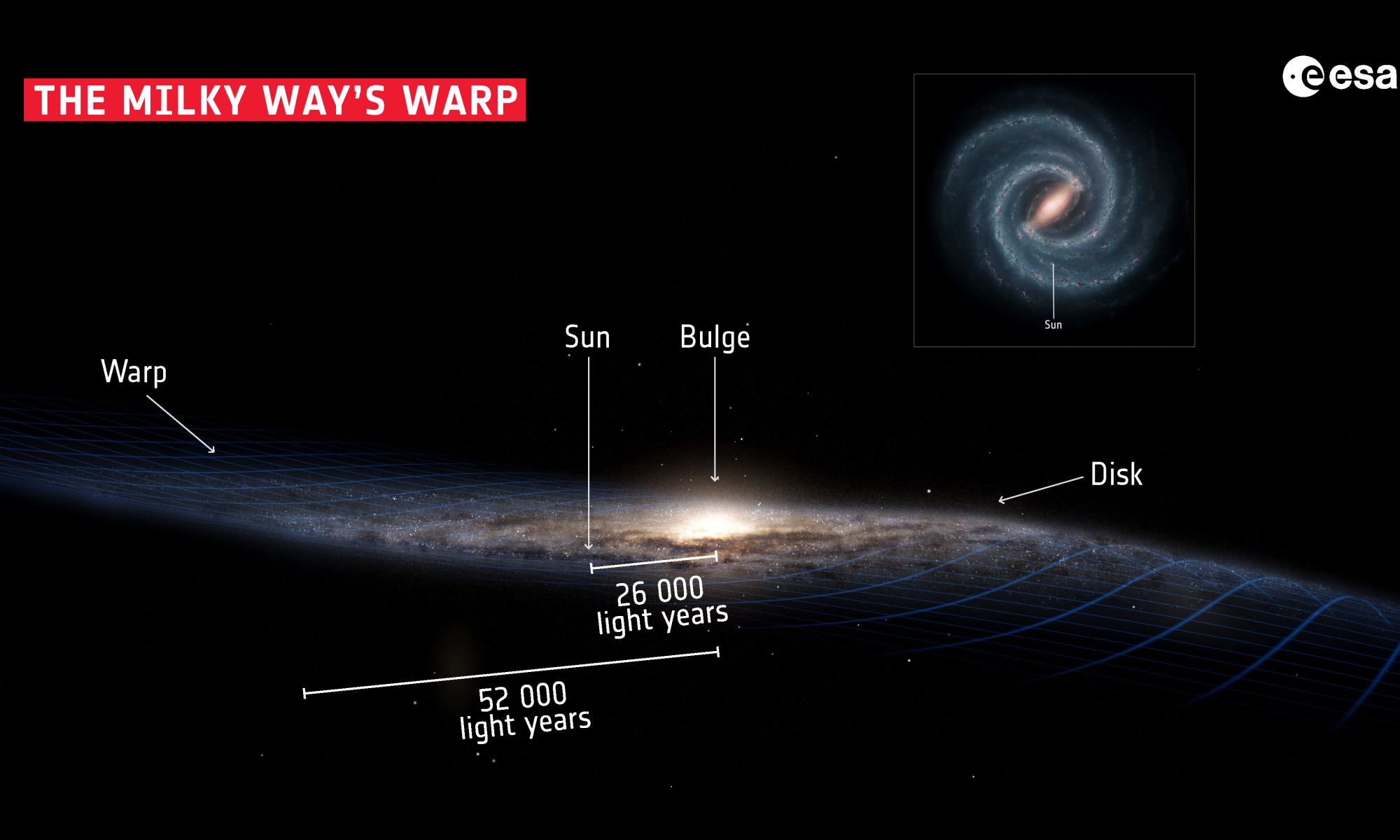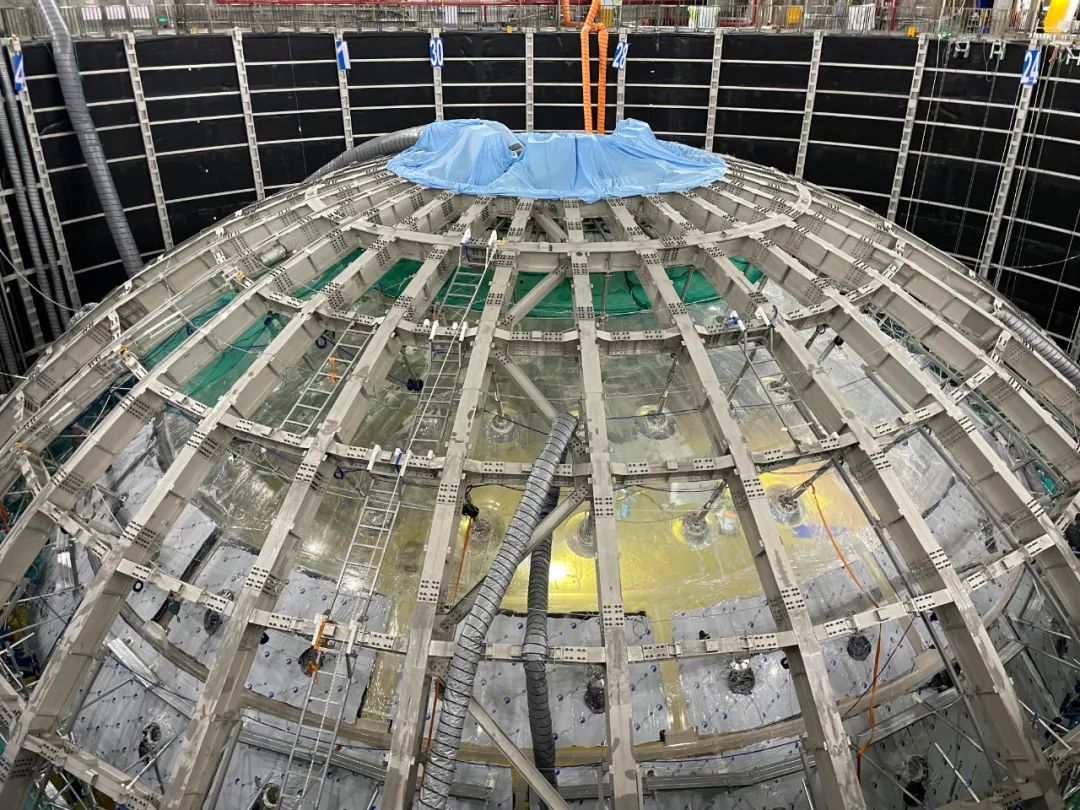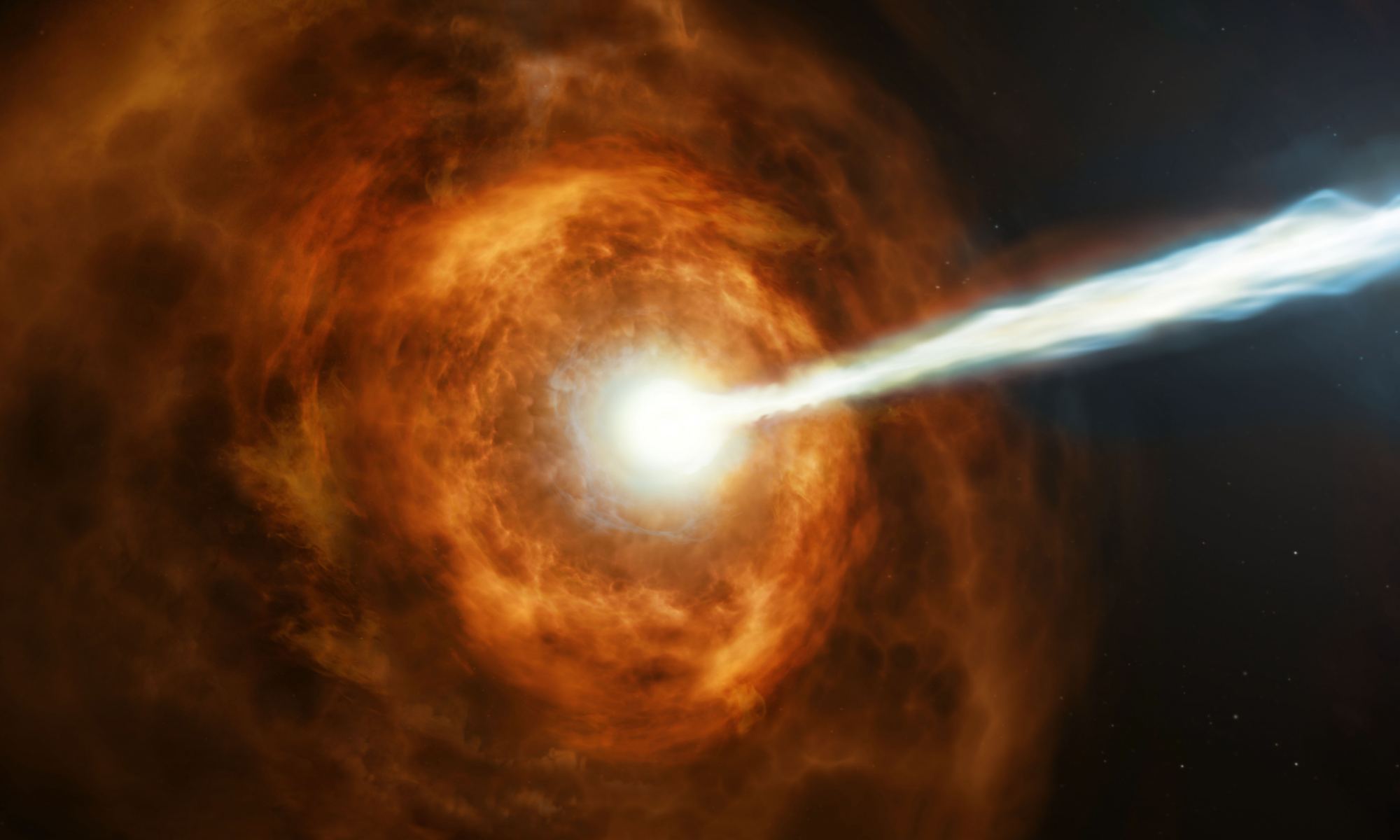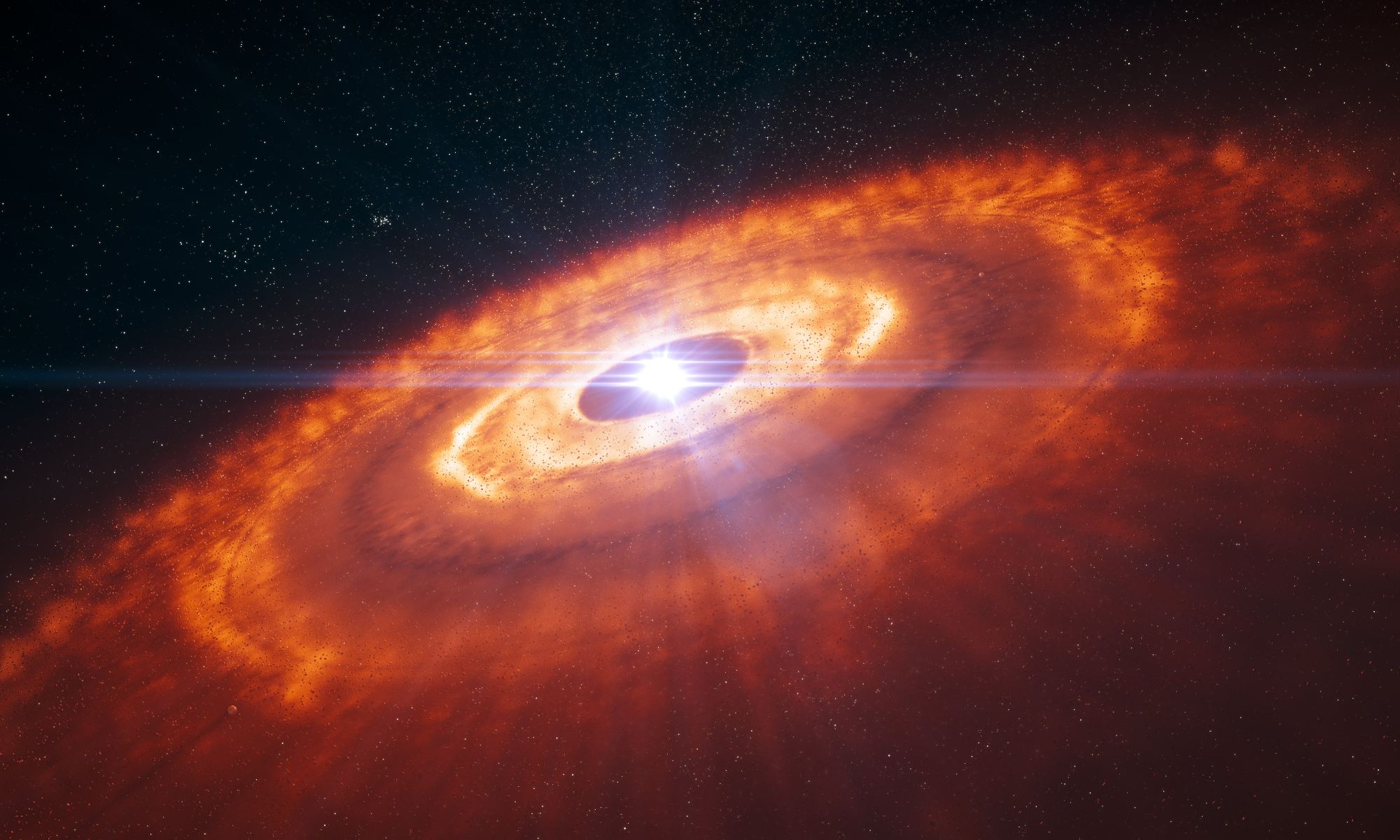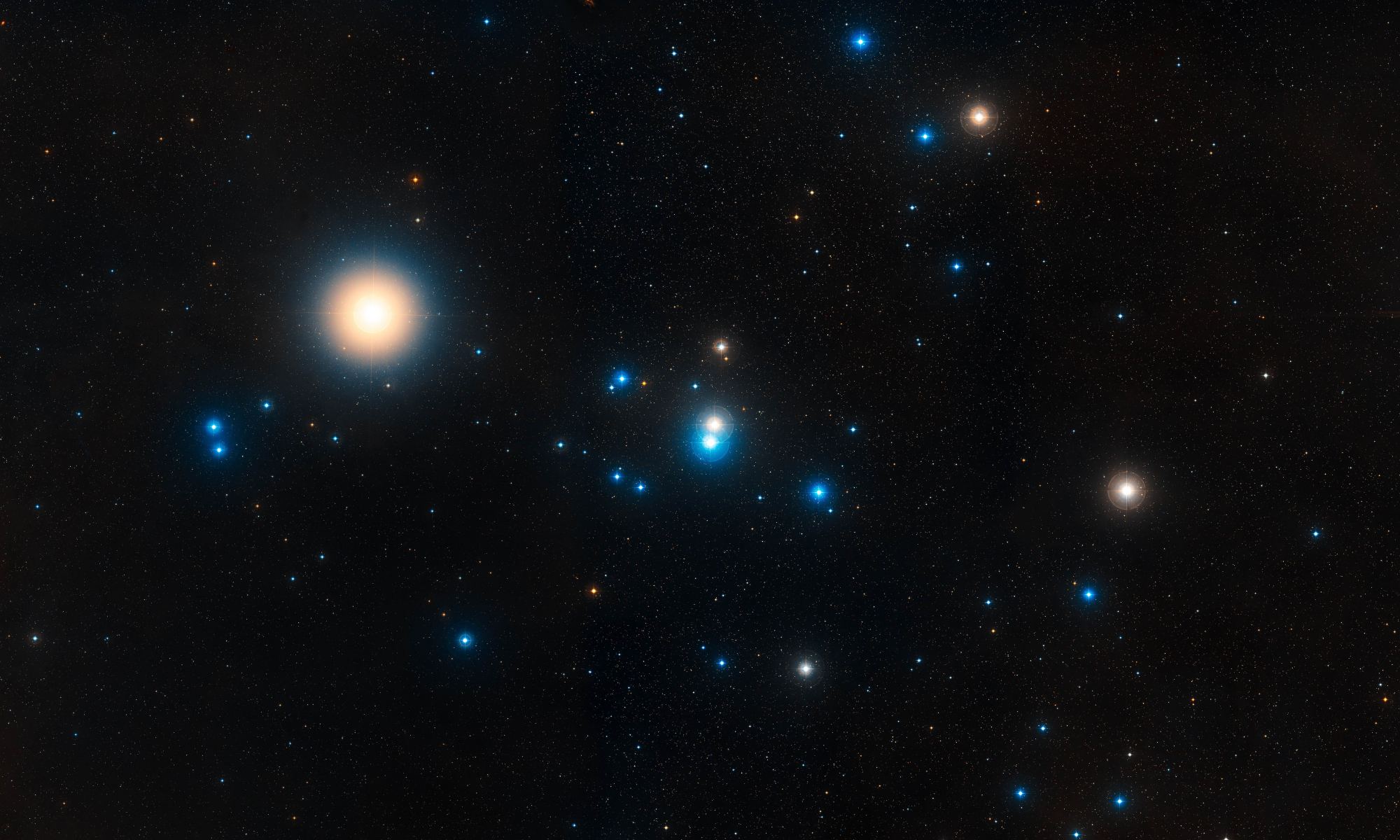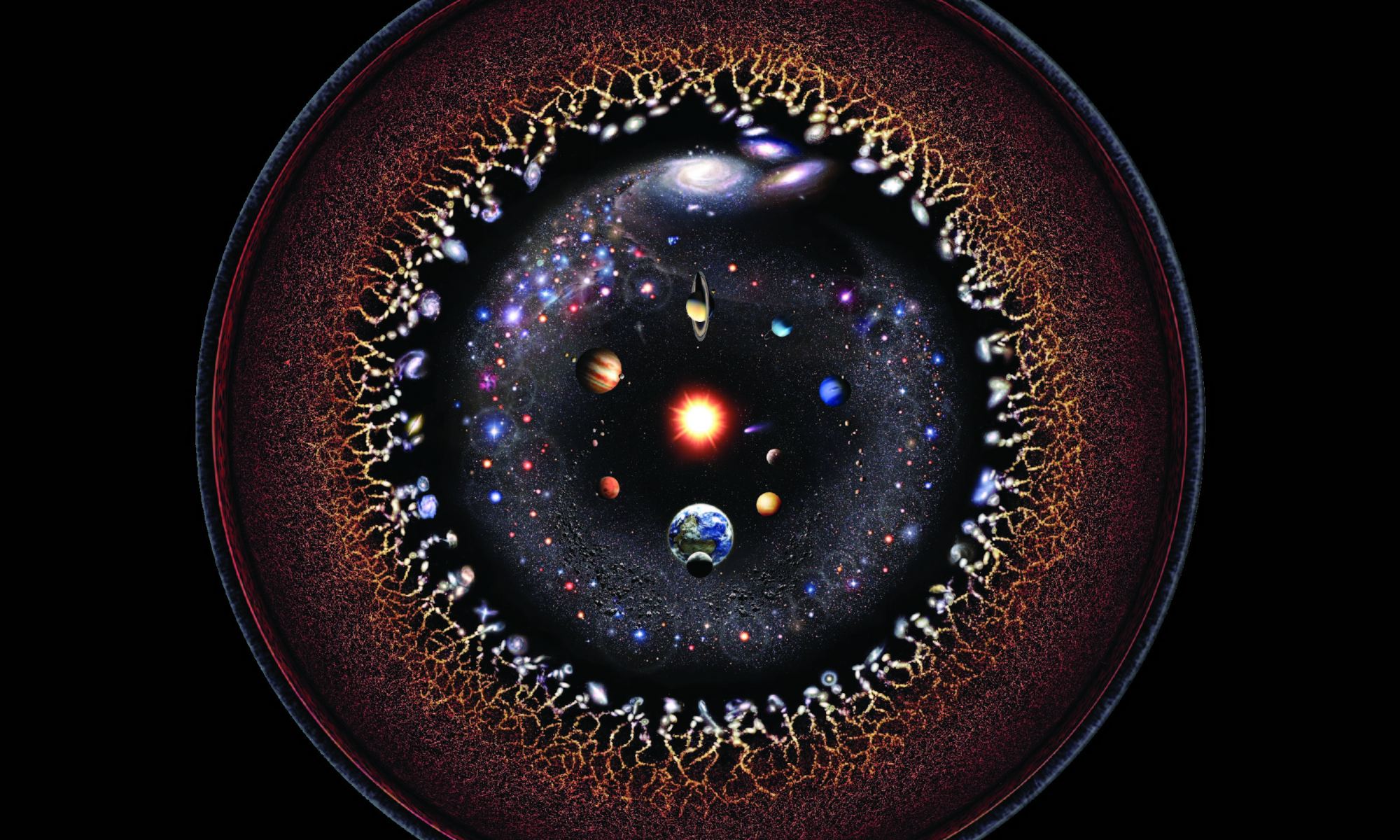The race is on to discover truly habitable Earth-like worlds. While we are starting to observe the atmospheres of large potentially habitable planets such as Hycean worlds with the telescopes we currently have, the most significant breakthroughs will likely come with the development of advanced specialized telescopes. These new designs will likely use a starshade to hide the glare of a star and allow us to directly observe its exoplanets. But will that be enough to study distant terrestrial planets?
Continue reading “An Ambitious New Technology Might be Needed to See Other Earths”The Milky Way's Disk is Warped. Is That Because our Dark Matter Halo is Tilted?
It’s difficult to determine the shape of our galaxy. So difficult that only in the last century did we learn that the Milky Way is just one galaxy among billions. So it’s not surprising that despite all our modern telescopes and spacecraft we are still mapping the shape of our galaxy. And one of the more interesting discoveries is that the Milky Way is warped. One explanation for this is that our galaxy has undergone collisions, but a new study argues that it’s caused by dark matter.
Continue reading “The Milky Way's Disk is Warped. Is That Because our Dark Matter Halo is Tilted?”A New Observatory Will Spot Core-Collapse Supernovae Before They Explode
The thing about a supernova is that you never know when it might occur. Supernovae are triggered either by a collision with another star or when the interior of a massive star becomes depleted of nuclear fuel and begins a rapid collapse. Neither of these show any major optical changes before the explosion, so we are left to scan the sky in the hopes of catching one in its early stages. But that could soon change.
Continue reading “A New Observatory Will Spot Core-Collapse Supernovae Before They Explode”A 2022 Gamma Ray Burst Was So Powerful, it was Detected by Spacecraft Across the Solar System
On October 9, 2022, a gamma-ray burst illuminated the solar system. Its light had traveled 2.4 billion years to reach us, having begun its journey when only bacteria and archaea existed on the Earth and oxygen was not yet plentiful in our air. Despite its long journey, the flash of light was tremendously bright.
Continue reading “A 2022 Gamma Ray Burst Was So Powerful, it was Detected by Spacecraft Across the Solar System”If Neutron Stars Have Mountains, They Should Generate Gravitational Waves
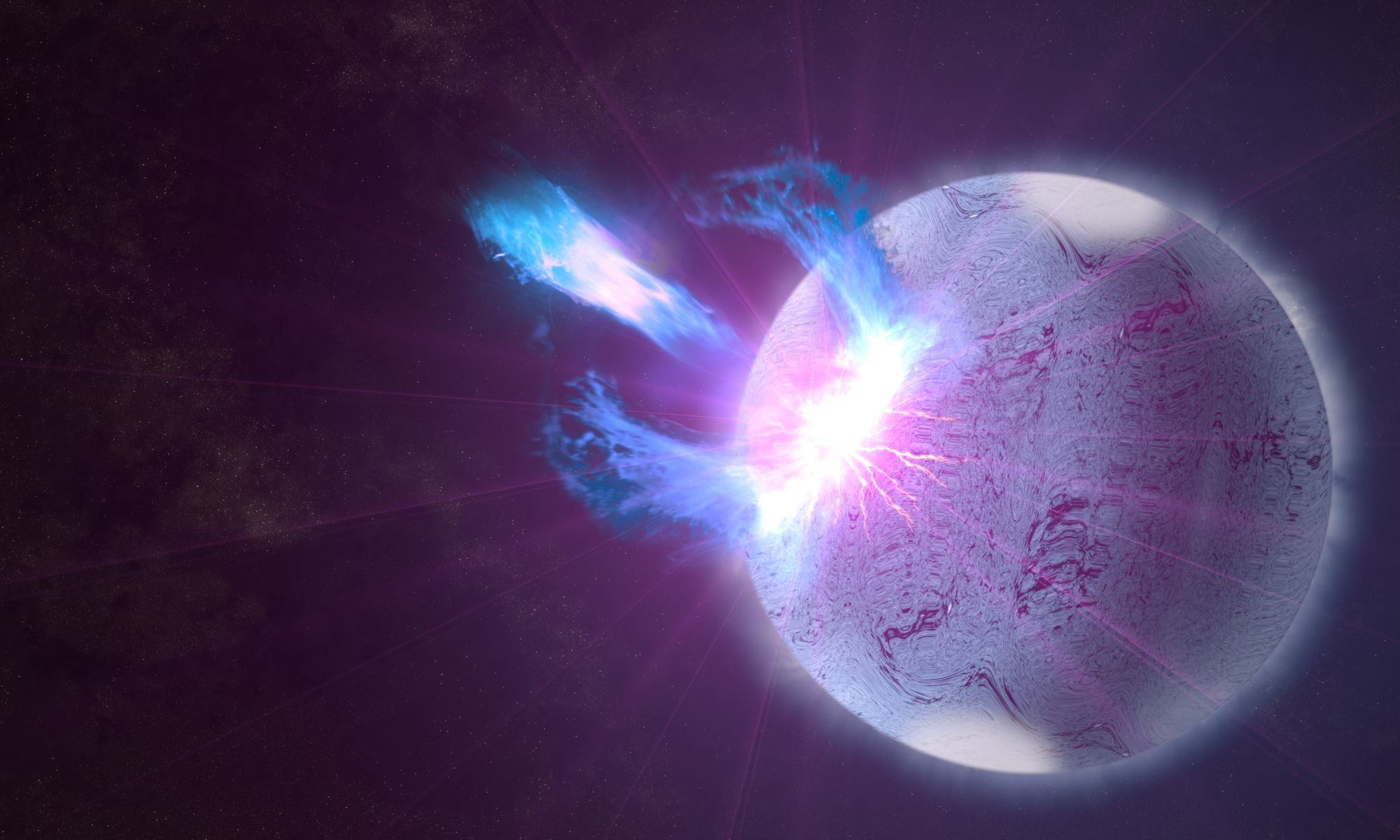
A neutron star is 2 solar masses compressed into a ball only 12 kilometers wide. Its surface gravity is so immense it compresses atoms and molecules into raw nuclei and squeezes electrons into protons transforming them into neutrons. Given such immense pressures and densities, you might assume neutron stars have an almost perfectly smooth surface. But you’d be wrong because we know that neutron stars can have mountains.
Continue reading “If Neutron Stars Have Mountains, They Should Generate Gravitational Waves”Has the First Biosignature Been Found on an Exoplanet?
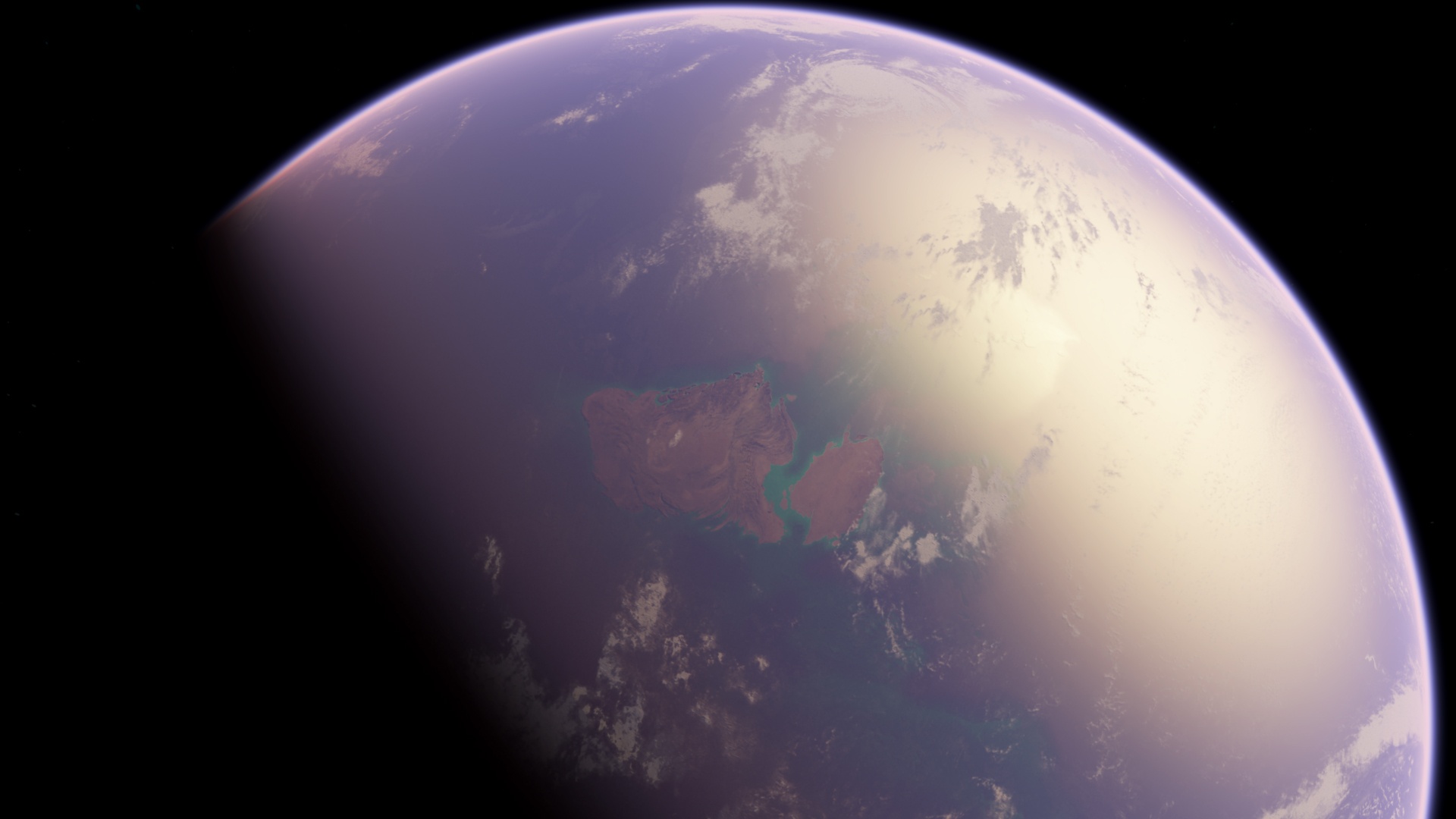
Recently I wrote about the discovery of a hycean world. A potentially habitable exoplanet with a deep warm ocean and thick, hydrogen-rich atmosphere. Such planets are thought to be somewhat common orbiting red dwarf stars, and they are an excellent candidate for life. While it’s an exciting discovery, buried in the research article was something even more exciting. Tentative evidence of a biosignature, hinting at the presence of life. You can guess which discovery started making headlines. But have astronomers really found life on another planet?
Continue reading “Has the First Biosignature Been Found on an Exoplanet?”Do The Gaps in Protoplanetary Disks Really Indicate Newly Forming Planets?
Roughly 5 billion years ago Earth was in the process of forming. Gas and dust gathered with the young Sun’s protoplanetary disk, likely nudged a bit by the resonant gravitational pull of Jupiter and other large worlds. One can imagine that as Earth formed it swept its orbit clear of debris, leaving a gap in the disk visible from light years away. While we know this tale is reasonably accurate, the idea that planets such as Earth always clear gaps in a protoplanetary disk likely isn’t.
Continue reading “Do The Gaps in Protoplanetary Disks Really Indicate Newly Forming Planets?”JWST Might Have Imaged a Hycean World for the First Time, With a Hydrogen-Rich Atmosphere and a Deep Planet-Wide Water Ocean
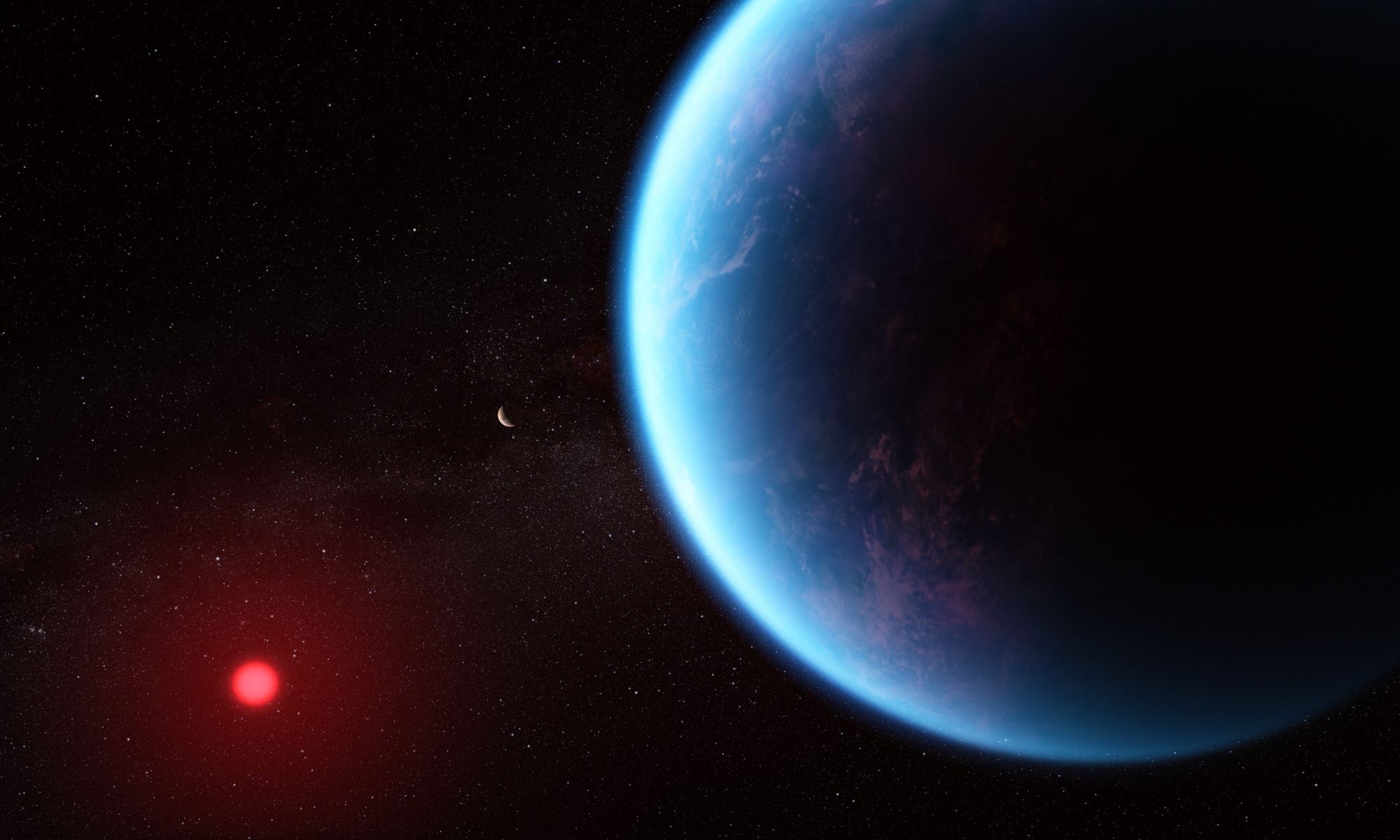
Despite its great oceans, Earth is not really an ocean world. It has less water than icy moons such as Europa and Enceladus, a relatively thin nitrogen-rich atmosphere, and vast continents that rise above sea level. A true ocean world would have no continents, a warm sea hundreds of kilometers deep, and a thick hydrogen and water-rich atmosphere. They are known as hydrogen-ocean planets or hycean worlds. While we’ve long thought they exist, the James Webb Space Telescope may now have found one.
Continue reading “JWST Might Have Imaged a Hycean World for the First Time, With a Hydrogen-Rich Atmosphere and a Deep Planet-Wide Water Ocean”The Closest Black Holes to Earth are Probably Hidden in This Nearby Star Cluster
In the constellation Taurus, there is a cluster of a few hundred stars known as the Hyades. The cluster is just 150 light-years away, and it could be harboring a stellar-mass black hole.
Continue reading “The Closest Black Holes to Earth are Probably Hidden in This Nearby Star Cluster”The Case for a Small Universe
The Universe is big, as Douglas Adams would say.
The most distant light we can see is the cosmic microwave background (CMB), which has taken more than 13 billion years to reach us. This marks the edge of the observable universe, and while you might think that means the Universe is 26 billion light-years across, thanks to cosmic expansion it is now closer to 46 billion light-years across. By any measure, this is pretty darn big. But most cosmologists think the Universe is much larger than our observable corner of it. That what we can see is a small part of an unimaginably vast, if not infinite creation. However, a new paper argues that the observable universe is mostly all there is.
In other words, on a cosmic scale, the Universe is quite small.
Continue reading “The Case for a Small Universe”
